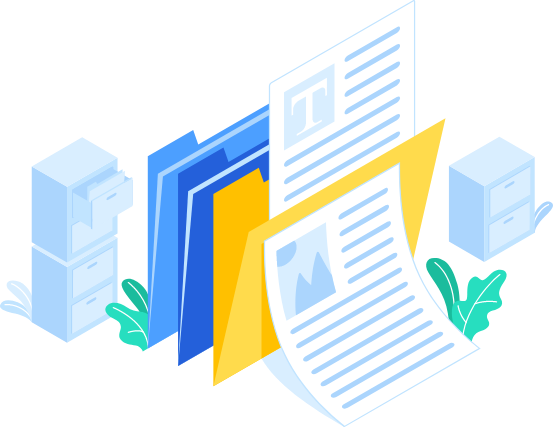Accessibility implies making digital content accessible to everyone irrespective of their abilities and environment. Here accessibility not only implies people with cognitive or physical disabilities it also includes groups that have slow networks or small screens like a mobile device. Incorporating it into the digital content not only accommodates all types of users but also helps the businesses too.
It helps in better SEO, increases the reputation of your brand, and aids in reaching more potential users. Additionally, the company can avoid penalties and legal hassles due to a lack of accessible design.

Types of Digital Accessibility Solutions
Document Accessibility
A document like all other digital content has to be readable by all types of users. It should be easy to read for a sighted user, people with low vision, or non-sighted users. When such a document is created it is called an accessible document. But more often than not, the documents that are available on websites, email attachments, online application forms are not accessible. That means using them using a screen reader or any other assistive device becomes a difficult task. Such documents need an overhaul so that everyone can utilize the document properties and go through the documents. Not just public agencies, even private companies have a moral and legal obligation to provide accessible documents.
How is the Document Accessibility Solution implemented?
Document remediation is When checking for accessibility standards one of the things that are not considered is document accessibility. It is the biggest challenge faced by people with disabilities as usually the text description for images, important structural elements, inappropriate usage of tables, and other such details are missing. Read on to understand how to implement it:

Assessing the documents: Any document that needs to be made accessible should be first assessed. The accessibility solutions identify the barriers by using various assistive devices like screen readers, etc to get a clear picture or the issues with the documents. After determining the issues, a detailed report is created along with recommendations for remediation.
Remediation services: The next step in document accessibility solution is to fix the issues that are present in the document. To be fully accessible and compatible and to comply with ADA and Section 508 the documents should include adding alt text description for images, videos, graphics, adding formats for tables, links, and forms, updating reading order for assistive devices, and other such best practices.
Need for document remediation services: Even though a document can be remediated by anyone, a remediation
service offers the following advantages.
Creating high-quality scanned documents: Scanning a document has become necessary. Moreover, when documents are in electronic form it is more accessible as it is easy to distribute it. But not all scanned documents are of high quality and can impact the user’s experience. The document accessibility solutions repair such documents so that the scanned images are of high-quality.
PDF Remediation made easy: PDF is a common format for a document in the digital world and hence
ensuring that it is accessible to everyone is critical for a company. The PDF remediation services ensure that
it is converted into a resource that is usable even for people with auditory and visual disabilities.
Testing the documents:Once the remediation of the document is done, it has to be tested for accessibility and compatibility.
Exporting the documents as PDF: Most of the documents are exported as a PDF as it is a common format. For it to be accessible, it must be tagged so that all the features are imported. Document accessibility solutions use the right tools and technologies so the PDF is tagged properly.

Web Accessibility Solutions
Web accessibility means that websites, applications, and tools are developed in such a way that people with disabilities also can use them. It encompasses cognitive, physical, auditory, neurological, visual, and speech disabilities. It also benefits people with temporary disabilities, changing abilities because of aging, people with a slow network, smaller screens, different input devices, and more. By making the websites and other digital content accessible people can interact, understand, and navigate using the web and also make useful contributions. It gives a level playing field to one and all.
Implementing Web Accessibility Solution
Audit for accessibility: The first step in implementing an accessible website is to assess the websites for section 508 compliance using the best testing methods. Checks are also done to determine if the WCAG 2.0 standards are implemented.
Repair and remediation: One of the most important tasks in this process is the remediation of the website so that it works seamlessly with any assistive device and also provides the best user experience. To achieve this, universally accepted design standards are implemented so that the maximum number of end-users can use the sites of both mobile and desktop. Some of the issues that are fixed include fixing HTML syntax errors, adding alt text descriptions, keyboard accessibility issues, errors in contrast, and much more.
Testing for conformance: Accessibility testing is done so that businesses comply with accessibility laws like Section 508, ADA and also follow the guidelines of WCAG 2.0, 2.1. Two types of testing are conducted, automated testing using tools and manual testing to check for issues missed by tools.
Conformance certification: Accessibility solutions help a business get the website certified for conformance.
Conformance Monitoring: These are solutions that ensure that the website stays compliant to the laws through monthly scans. Any updates that are made to the guidelines are implemented on the site.
Custom web development: These solutions help businesses build a website from scratch implementing accessible design and following the best practices. Upgrading the website to comply with the standards is also done.
Make your digital content accessible by everyone using accessibility solutions. It not only helps to comply with laws it also increases customer engagement and satisfaction.



